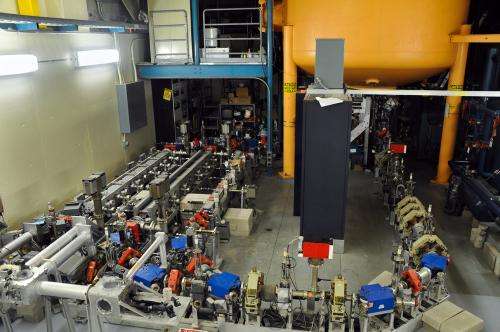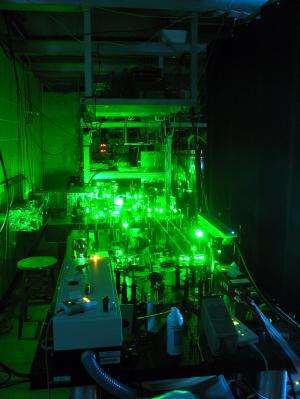Scientists employ powerful laser to breathe new life into old technology for studying atomic-level structures

A multi-university team has employed a high-powered laser to dramatically improve one of the tools scientists use to study the world at the atomic level. The team was able to use their amped-up electron paramagnetic resonance (EPR) spectrometer to study the electron spin of free radicals and nitrogen atoms trapped inside a diamond.
The improvement will pull back the veil that shrouds the molecular world, allowing scientists to study tiny molecules at a high resolution.
The team, which includes researchers from USC, the University of California-Santa Barbara and Florida State University, will publish their findings in Nature on September 20.
"We developed the world's first free-electron laser powered EPR spectrometer. This ultra high-frequency high-power EPR system gives us extremely good time resolution. For example, it enables us to film biological molecules in motion," said Susumu Takahashi, assistant professor of Chemistry at the USC Dornsife College of Letters, Arts and Sciences, and lead author of the Nature paper.

By using a high-powered laser based at UC Santa Barbara, the researchers were able to significantly enhance EPR spectroscopy, which uses electromagnetic radiation and magnetic fields to excite electrons. The excited electrons emit electromagnetic radiation that reveals details about the structure of the targeted molecules.
"Each electron can be thought of as a tiny magnet which senses the magnetic fields caused by atoms in its nano-neighborhood," said Mark Sherwin, professor of physics and director of the Institute for Terahertz Science and Technology at UCSB. "With FEL-powered EPR, we have shattered the electromagnetic bottleneck that EPR has faced, enabling electrons to report on faster motions occurring over longer distances than ever before. We look forward to breakthrough science that will lay foundations for discoveries like new drugs and more efficient plastic solar cells."
EPR spectroscopy has existed for decades. Its limiting factor is the electromagnetic radiation source used to excite the electrons – it becomes more powerful at high magnetic fields and frequencies, and when targeted electrons are excited with pulses of power as opposed to continuous waves.
Until now, scientists performed pulsed EPR spectroscopy with a few tens of GHz of electromagnetic radiation. Using the UC Santa Barbara Free Electron Laser, which emits a pulsed beam of electromagnetic radiation, the multi-university team was able to use 240 GHz of electromagnetic radiation to power an EPR spectrometer.
Journal information: Nature
Provided by University of Southern California



















